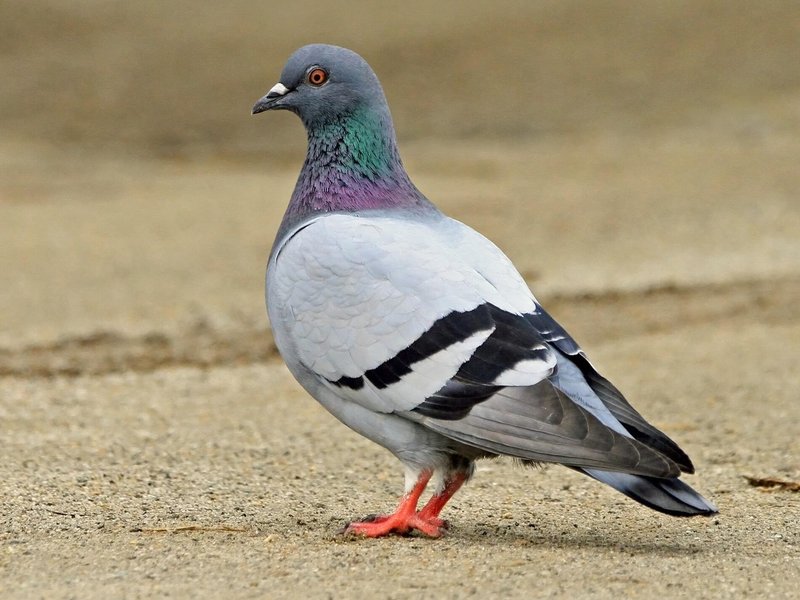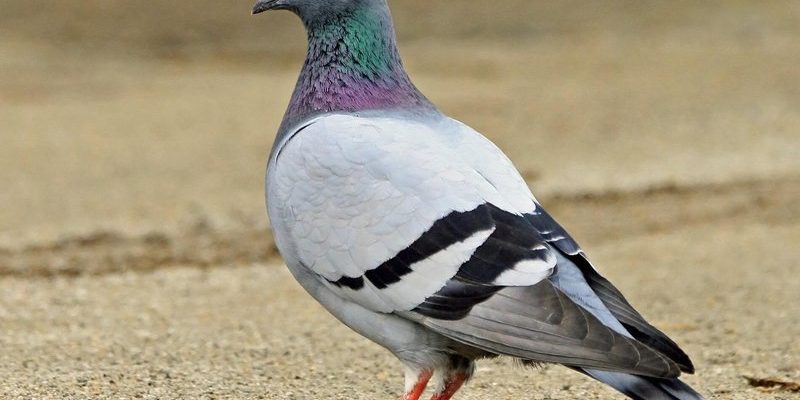
Imagine moving from a quiet country home to a busy city. It’s a huge change, right? You’d need to learn new ways to find food, shelter, and even avoid traffic. Well, that’s precisely what rock pigeons have done! They’ve swapped rocky cliffs for skyscrapers, and instead of hunting for seeds in fields, they’ve become experts at scouring our parks and streets for tasty morsels. Let’s dive into how these birds have managed to pull off such a remarkable transformation.
Physical Adaptations for Urban Living
Rock pigeons are not just your average birds. Their physical adaptations play a significant role in how they thrive in diverse environments. For starters, they have strong, muscular bodies that allow them to fly long distances. This ability is particularly handy as it helps them escape predators and travel to different food sources. You might even see them soaring to impressive heights above the city skyline.
Their feathers are also worth mentioning. With a mix of grey, white, and iridescent green, they not only look pretty but serve a purpose too. The coloration helps them blend into their surroundings, providing a level of camouflage against potential threats. So, next time you see a pigeon, take a moment to appreciate its beautiful plumage—it’s more than just a fashion statement!
Lastly, rock pigeons possess excellent vision. They can see a wide range of colors, which helps them locate food and spot danger from afar. This sharp eyesight is crucial for navigating busy urban environments where they have to dodge people and vehicles. It’s like having a superpower in a fast-paced world!
Behavioral Adaptations to Thrive in Cities
When it comes to behavior, rock pigeons really shine. Their social behavior is one of the key factors in their adaptability. These birds are highly social creatures that thrive in flocks. Being in a group not only provides safety in numbers but also helps them find food more effectively. If one pigeon spots a snack, others are likely to follow suit. It’s like having a built-in GPS system for food!
Moreover, rock pigeons have learned to take advantage of human activity. They’ve adapted their foraging habits to feed on discarded food in urban areas. Whether it’s crumbs from a picnic or leftover fries from a fast-food joint, these clever birds have figured out how to capitalize on our waste. It’s a bit cheeky, but it works for them!
You might be wondering how they handle the noise and chaos of city life. Surprisingly, rock pigeons have a high tolerance for disturbances. They’ve learned to ignore the hustle and bustle happening around them. This adaptability is essential for their survival, allowing them to nest and feed in areas that would be stressful for many other animals.
Nesting and Reproduction in Urban Areas
Nesting is another area where rock pigeons have shown remarkable flexibility. Instead of building nests on cliff faces, they now find cozy spots in buildings, bridges, and ledges. They’re resourceful, too, using materials like twigs, grass, and even bits of plastic to construct their homes. It’s like having a DIY project wherever they go!
When it comes to reproduction, rock pigeons are quite efficient. They can breed throughout the year, depending on food availability and the weather. A typical female can lay two eggs, which both parents take turns incubating. This shared responsibility strengthens their bond and ensures the young are well cared for when they hatch.
They also exhibit interesting parental behaviors. Parent pigeons feed their chicks a substance known as *pigeon milk*, which is rich in nutrients. This high-protein food source is crucial for their growth and development. So, not only do they make great homes, but they also make sure their little ones are well-fed!
The Impact of Urban Environments on Rock Pigeons
As rock pigeons have adapted to urban life, they’ve also influenced their surroundings. Their presence helps control food waste in cities by consuming discarded items. While some people may not appreciate their habits, it’s worth noting that they play a role in the ecosystem.
However, their adaptability isn’t without challenges. Urban environments can pose threats like predators, toxic substances, and even the effects of climate change. Rock pigeons must navigate these dangers while continuing to thrive. It’s a delicate balance, like walking a tightrope in a chaotic circus.
Furthermore, their success often leads to higher population densities, which can create conflicts with humans. From dodging cars to dealing with messes left behind, it’s clear that living alongside pigeons requires some mutual adjustments.
Conservation and Management Efforts
Due to their adaptability, rock pigeons are classified as a least-concern species, meaning they’re not currently at risk for extinction. However, managing their populations in urban settings is essential for maintaining harmony between people and birds. Various cities have implemented strategies to manage pigeon populations, like installing bird spikes or providing non-lethal relocation options.
Interestingly, some communities have embraced rock pigeons by creating feeding stations where people can provide food. This approach encourages responsible feeding practices while reducing the chances of pigeons foraging through trash.
In any case, conservation efforts are crucial to ensuring these birds can continue to thrive in urban landscapes. After all, keeping our feathered friends around not only enriches our environment but also enhances our connection to nature.
The Future of Rock Pigeons
As we look ahead, the future of rock pigeons appears promising but uncertain. Their ability to adapt has allowed them to thrive in urban environments, but changes in our cities—like increased pollution or habitat loss—could impact their survival. Monitoring their populations and understanding their needs is vital for ensuring they don’t hit any unforeseen roadblocks.
Ultimately, rock pigeons serve as a reminder of resilience. They’ve shown that with a little creativity and adaptability, it’s possible to flourish even in challenging environments. Just like us, they’re constantly navigating life’s curveballs while finding ways to make the best of their surroundings.
In conclusion, rock pigeons are more than just city dwellers; they’re resilient creatures adapting to an ever-changing world. The next time you see one pecking at the ground or taking flight, take a moment to appreciate their remarkable journey. They’ve turned our concrete jungles into their own thriving habitats, and that’s something truly special.

